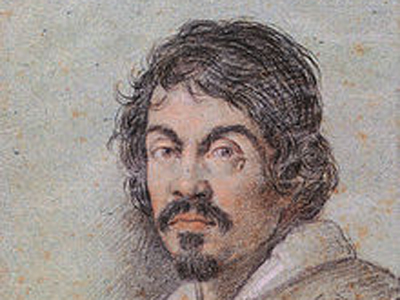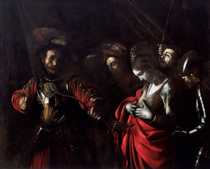

Painter - Caravaggio
Michelangelo Merisi da Caravaggio was born in 1571. At the age of 6 he was orphaned by an outbreak of bubonic plague, and at the age of 11 he moved to Milan. There he trained as a painter under Simone Peterzano, who had himself trained under Titian. Then, at 16, he moved to Rome to make his living where there was great demand for religious paintings.
When Caravaggio was in his early 20s his work was noticed by Cardinal Francesco del Monte, who gave the artist a room, board and a pension. Then, in 1597, he was commissioned to decorate a part of the Church of San Luigi dei Francesi in Rome. He was tasked with painting three large paintings, each showing a different scene from the life of Saint Matthew. The realistic style of the resultant paintings upset some viewers, and one of the works, Saint Matthew and the Angel, had to be redone in a more reverential fashion.
The original of this work is privately owned, but this later version can be seen in the Uffizi Gallery in Florence, Italy
The idea that Andrew was martyred on an X-shaped cross did not come to the fore until a century after Caravaggio's time, hence the more regular T-shaped crucifix
The Roman god Cupid is shown trampling over a violin, a lute, some armour, a coronet, a square and compasses, and a pen and manuscript - thus signifying love's superiority over all other human endeavours
Caravaggio died shortly after the painting was completed. Whilst journeying to Rome in order to seek pardon for a death he had caused in a duel, the 38 year old artist died, reportedly from a fever
Ready for more?
not all...
quizzers. Try to win a coveted spot on our Hall of Fame Page.
















